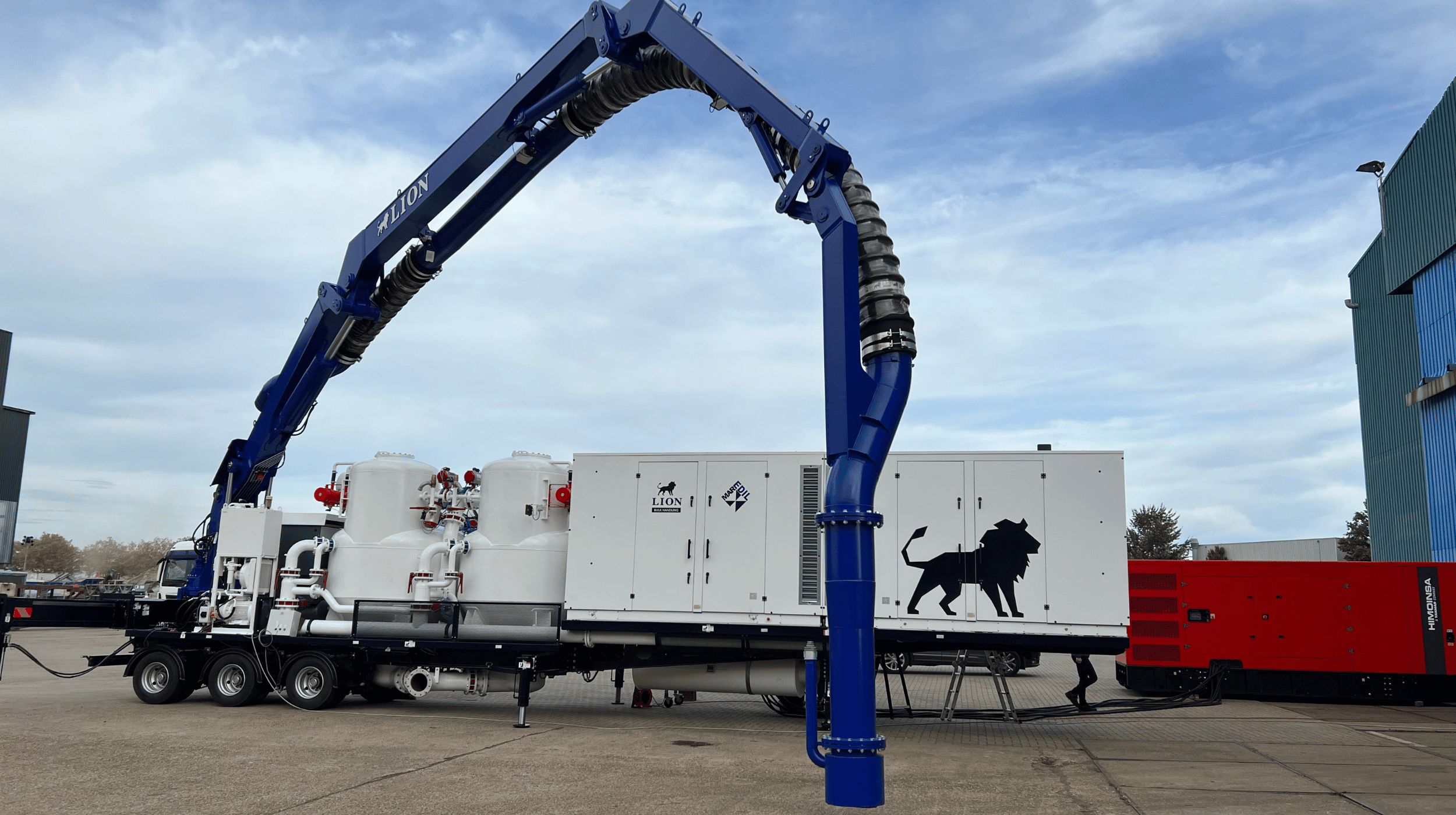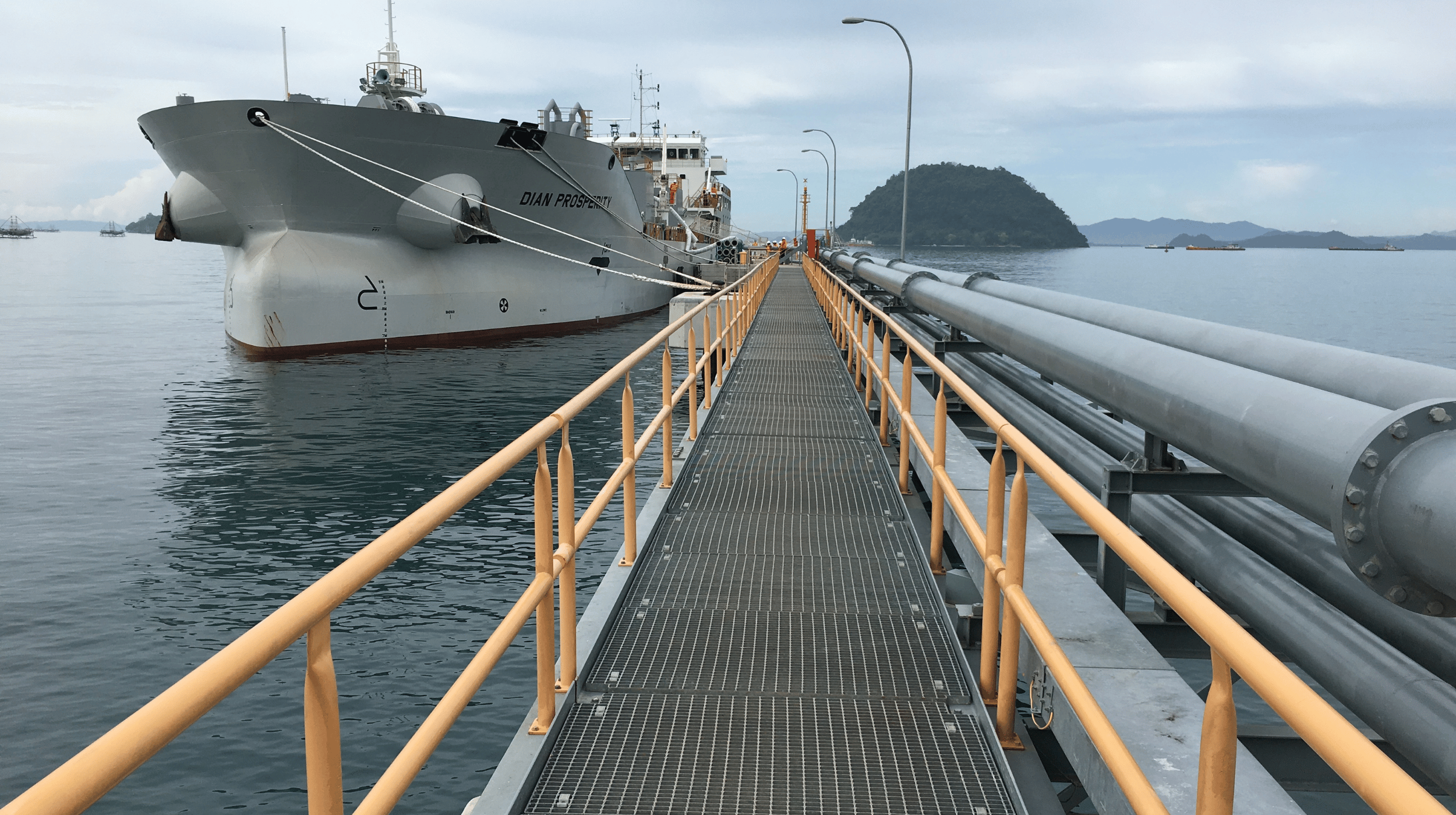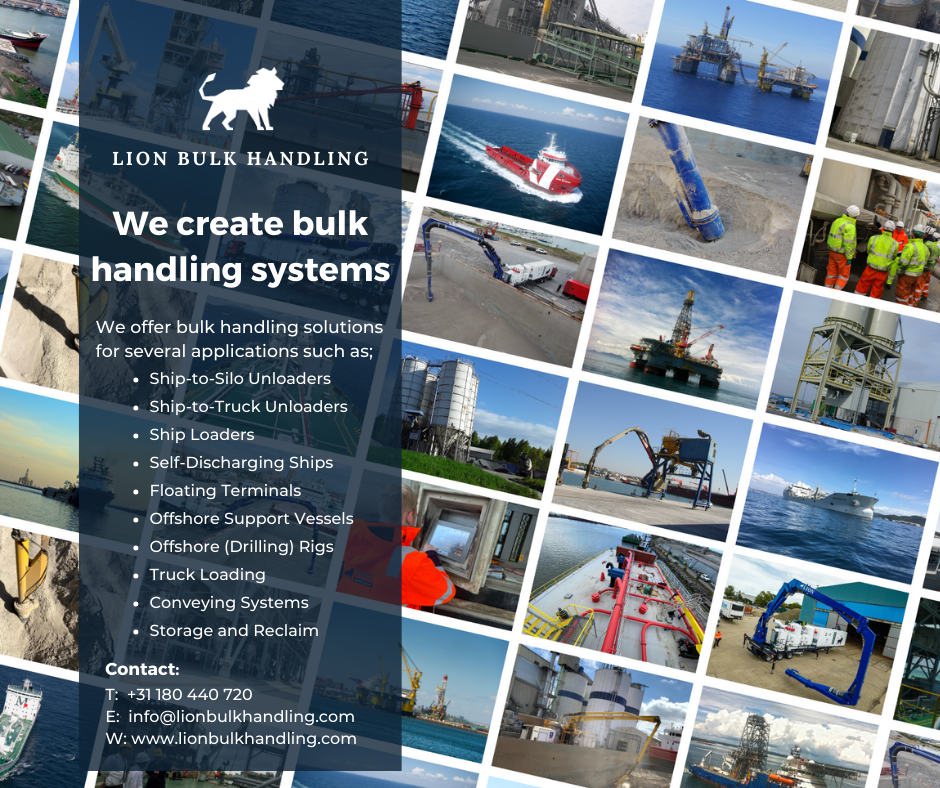Self-unloading cement carriers vs pneumatic ship unloaders

Cement bulk handling equipment for vessels/barges comes many varies concepts, whereas basically the separation is between Closed Hatch vessels/barges over Open Top vessel/barges, like for example;
Open top vessels/barges;
Pneumatic Ship Unloader
Pneumatic Ship Unloader (pneumatic system, based on using a vacuum for collecting the cargo trough a pipe which is mounted onto a manipulator arm moving in the vessel holds and temporarily stores it into Re-loader Tanks and use compression in the following cycle to convey it in badges towards the storage facility on-shore)
Mechanical Ship Unloader
Mechanical Ship Unloader (mechanical system, based on using an upwards rotating screw for collecting the cargo trough a pipe which is mounted onto a manipulator arm moving in the vessel holds and drops it either;
- Direct onto a belt conveyor towards the storage facility on-shore or
- Temporarily stores it into Pressure Tanks using compression in the following cycle to convey it in badges towards the storage facility on-shore).

Closed hatch vessel/barges;
Pneumatic Ship Unloader
Pneumatic Self-Unloading Cement Carrier (pneumatic system, based on using either;
- Pressure Tanks at the lowest position in the vessel holds for direct gravity loading and use compression in the following cycle to convey it in badges towards the storage facility on-shore
- Use a vacuum for collecting the cargo trough a pipe which is fixed in the vessel holds to temporarily store it into re-loader tanks and use compression in the following cycle to convey it in badges towards the storage facility on-shore
- Hoppers at the lowest position in the vessel holds for direct gravity loading into screw conveyors to convey it continues towards the storage facility on-shore).
Mechanical Ship Unloader
Mechanical Self-Unloading Cement Carrier (mechanical system, based on using an upwards rotating screw for collecting the cargo trough a fixed pipe in the vessel holds and drops it either;
- Direct onto a belt conveyor towards the storage facility on-shore or
- Temporarily stores it into Pressure Tanks using compression in the following cycle to convey it in badges towards the storage facility on-shore).

No system fits all
As there is no concept serves all customers wishes/requirements, it is significant to understand each pros & cons like: investment-, labor-, energy-, maintenance-costs, spare parts need to have in stock, down-time in case of failure, etc. In this blog, we will focus on 2 common concepts: closed hatch Pneumatic Self-Unloading Cement Carrier by a vacuum system vs the open top vessel/barge Pneumatic Ship Unloader.
The objective is as follows: complete pneumatic logistic solution from a cement factory silo extraction point into a vessel or barge and unload it again at the discharge location into a storage facility.
Equipment needed for closed hatch solution:
- Double Sender Tank System– Collecting cement from existing silo’s, temporarily storage in double sender tanks, which pressurize after being full and pneumatically conveys the material towards the jetty via a pipeline directly into the cargo hold of a vessel/barge
- Fluidized Floor vessel/barge – Add a fluidized floor design (like air slides) into vessel/barge allowing to aerate the floor underneath the cargo for self-unloading capabilities
- Unloading equipment – Allowing to create a vacuum and collect the cargo via the fluidized floor design, temporarily storage in double re-loader tanks, which pressurize after being full and pneumatically conveys the material towards shore via a pipeline
Equipment needed for the open hatch solution:
- Double Sender Tank System – Collecting cement from existing silo’s, temporarily storage in double sender tanks, which pressurize after being full and pneumatically conveys the material towards the jetty via a pipeline towards the ship loader
- Ship loader – Receiving the conveyed material, need to separate the compressed air from the cargo and load the vessel/barge hold via gravity by means of a loading chute
- Open hatch vessel/barge
- Pneumatic Ship Unloader – Allowing to create a vacuum and collect the cargo via a manipulator arm, temporarily storage in double re-loader tanks, which pressurize after being full and pneumatically conveys the material towards the storage facility via a pipeline.
The follow table illustrate some pros & cons for these 2 solutions in comparison to multiple important factors;
|
Solution |
Closed hatch |
Comments |
Open hatch |
Comments |
|
Equipment on shore |
2 |
Sender tank & unloader |
3 |
Sender tank, ship loader & unloader |
|
Pollution during loading |
None |
No intermediate equipment between sender tank and vessel cargo area (closed loop via piping) |
More |
Loading chute gravity drops cargo into open vessel hold which causes dust |
|
Maintenance |
2 |
Vessel floor design doesn’t have moving, cables or motor equipment |
3 |
All equipment has moving, cables or motor equipment |
|
Operating crew during whole process |
2 |
1 (operating equipment) and 1 (vessel member for witnessing/standby) |
8 |
1 (sender system), 1 (ship loader), 1 (manipulator arm), 3 (cleanup crew), 2 (opening/closing hatches, shifting vessel as the manipulator arm cannot reach all cargo area in one go and/or balancing limitation & witnessing/standby |
|
Vessel movement during loading/unloading |
0 |
Piping onboard allows to divert cargo to each hold area needed including even port & starboard |
2 or 3 |
Gravity loading allows the cargo so free flow uncontrolled and need to be guided during loading and move the vessel allowing the arm to reach all cargo hold areas during cleaning-up |
|
Modifying vessel/barge |
Yes |
Fluidized floor, piping and valves need to be added (dedicated vessel design) |
No |
Every open cargo hold vessel can be used |
|
Cleaning-up |
No |
Automatically due to the fluidized floor design |
Yes |
Sweeping final cargo during unloading to the inlet of manipulator arm (last 20% of total cargo volume need to be manual moved) |
|
Alternative materials transported by the vessel |
No |
Dedicated to powder materials |
Yes |
Every open cargo hold vessel can be used |
|
Cargo remaining after unloading |
No |
99% clean due to the fluidized floor design |
Yes |
Always leftovers behind cargo hold beams and spaces |
|
Weather influences |
No |
Closed loop & closed cargo hold |
Yes |
Hold covers need to be removed during loading/unloading, during monsoon (sometimes even 30% to 40% of the year) it cannot be loaded or unloaded |
|
Average unloading capacity |
High |
System will load and unload continues at maximum capacity until full or empty (no vessel movements or operator experience limitations) |
Lower |
More interruptions due to vessel/barge movement, weather influences, experience of the manipulator arm operator, cleaning-up, opening/closing hold hatches |
By using the closed hatch design, the following will be gained:
- Eliminate: dust and vessel shifts during loading/unloading, safety issues as multiple crew need to work in a dangerous area, potential breakdowns of heavy mechanical equipment (ship loader arm and manipulator unloader arm, increased risks in damaging the vessel/barge due to the heavy steel equipment operating in the vessel holds during loading/unloading & cleaning up
- Reduce: labor costs & unloading time
- Increase: energy consumption (overall more energy efficient) and due to higher discharge rate, it allows to increase more vessel/barge movements per annual which lead to have a more efficient vessel/barge
The overall investment-, labor- and operational costs for this complete logistic solution is lower in favor to closed hatch vessel/barge concept.
Contact our flow engineers for more information.

Lion Bulk Handling Solutions
In conclusion, investing in efficient bulk handling systems is paramount for businesses looking to streamline their operations and maximize productivity. Whether you’re in the manufacturing, cement, offshore or maritime industry, optimizing your material handling processes can lead to significant cost savings and improved efficiency.
If you’re interested in learning more about how bulk handling systems can benefit your business, don’t hesitate to reach out to us. Our team of experts is here to provide you with tailored solutions and answer any questions you may have. Contact us today for more information and take the first step towards enhancing your operations.


